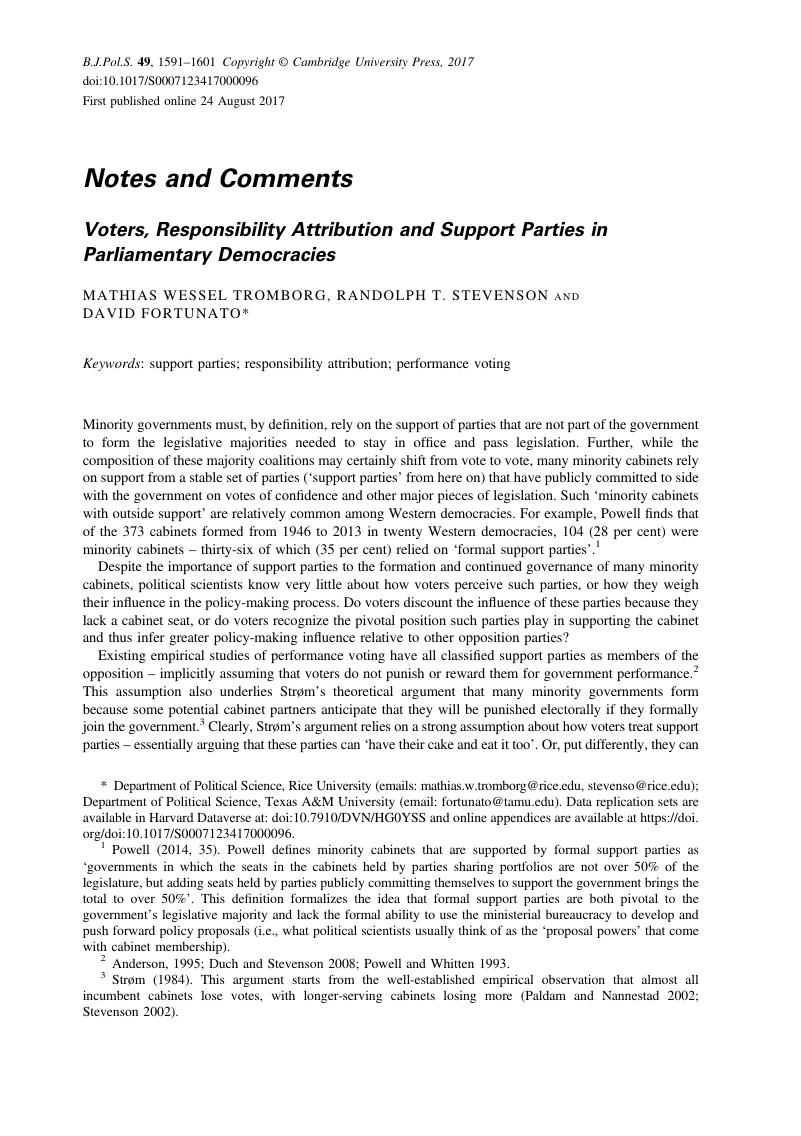Crossref Citations
This article has been cited by the following publications. This list is generated based on data provided by
Crossref.
Tromborg, Mathias Wessel
Stevenson, Randolph T.
and
Fortunato, David
2019.
Voters, Responsibility Attribution and Support Parties in Parliamentary Democracies – CORRIGENDUM.
British Journal of Political Science,
Vol. 49,
Issue. 4,
p.
1603.
Hjermitslev, Ida B
2023.
Between cabinet membership and opposition: Commitment and responsibility of support parties.
Party Politics,
Vol. 29,
Issue. 5,
p.
981.
Thürk, Maria
and
Stecker, Christian
2023.
Flexibel, stabil und effektiv? Zum Stand der Forschung über Minderheitsregierungen.
Zeitschrift für Vergleichende Politikwissenschaft,
Vol. 17,
Issue. 3,
p.
297.
HJERMITSLEV, IDA B.
2024.
Punishing the pseudo‐opposition: Accountability under a minority government.
European Journal of Political Research,
Vol. 63,
Issue. 2,
p.
774.
Thürk, Maria
and
Klüver, Heike
2024.
Hitting the Sweet Spot? The Electoral Consequences of Supporting Minority Governments.
Comparative Political Studies,
Thürk, Maria
and
Krauss, Svenja
2024.
The formalisation of minority governments.
West European Politics,
Vol. 47,
Issue. 1,
p.
113.
Bräuninger, Thomas
and
Debus, Marc
2024.
Theorie und Empirie der Vergleichenden Koalitionsforschung: Stand und Ausblick.
Zeitschrift für Politikwissenschaft,
Vol. 34,
Issue. 4,
p.
533.
Bergman, Matthew E.
and
Krauss, Svenja
2025.
The Persistence of Memory
: Evidence that Perceptions of Support Parties Update Gradually
.
Representation,
p.
1.
